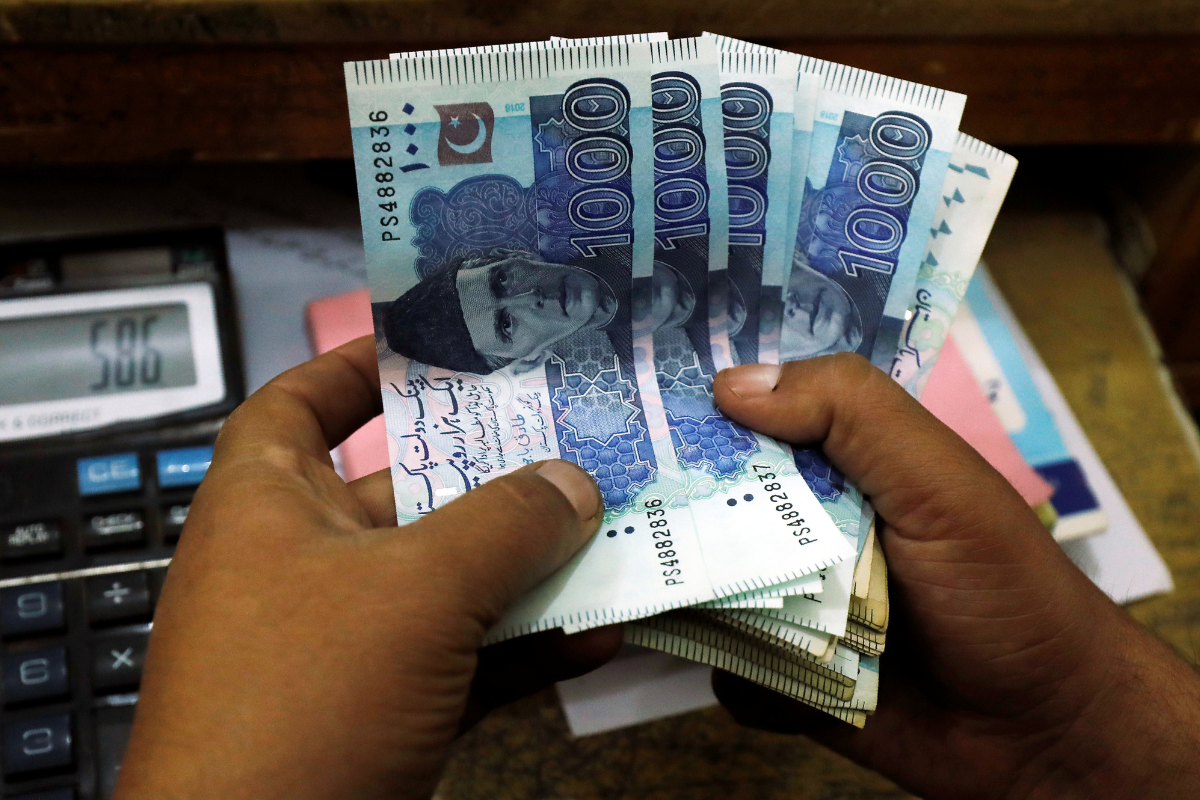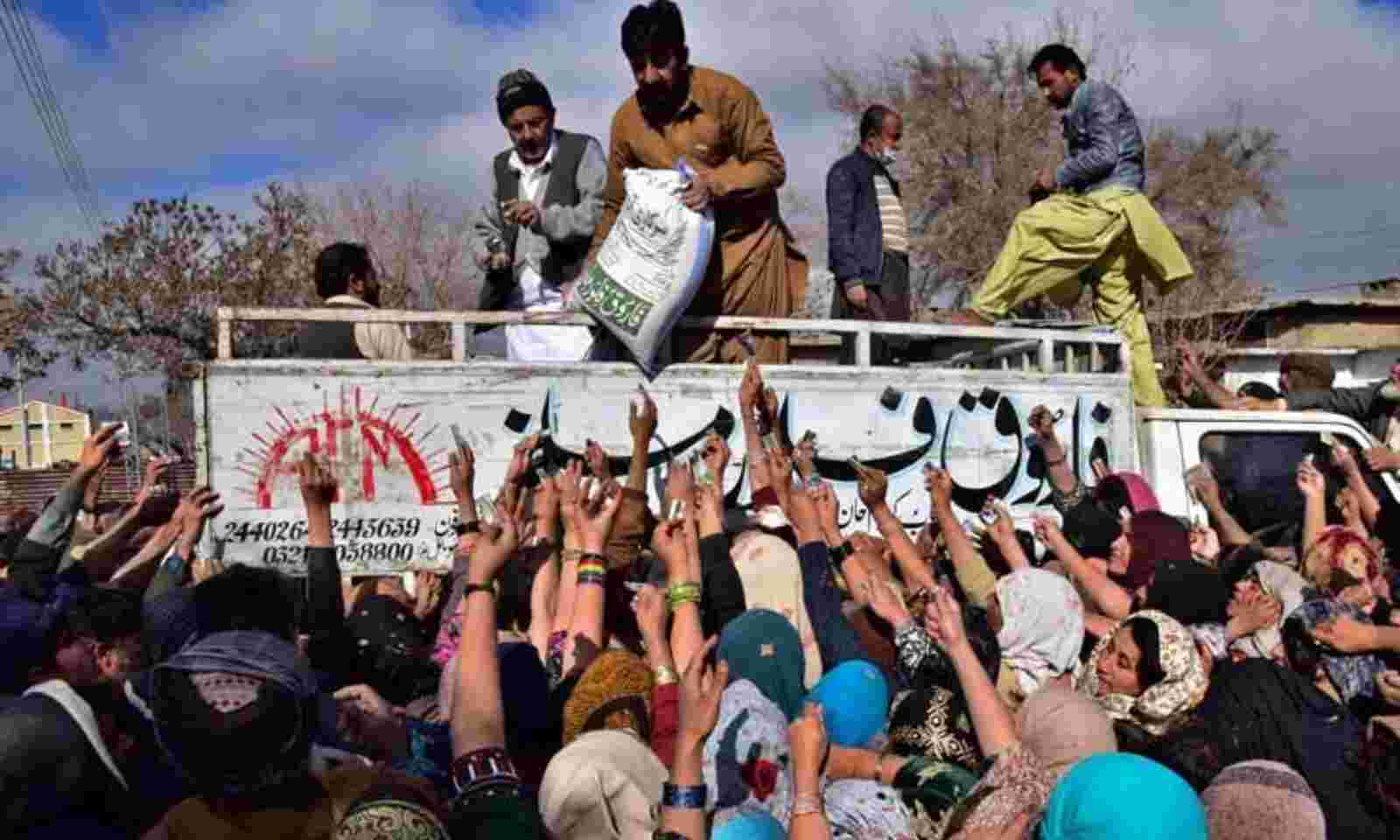Pakistan’s Inflation Is At A 50-Year High, And 21 People Having Died In Stampedes At Food Distribution Sites.
The Pakistani rupee reached a record low on March 20, 2023, finishing at PKR 284, according to State Bank of Pakistan data. The cutting-edge drop in the Pakistani rupee's cost is a lack of PKR 2.32, or 0.82 per cent, from the preceding week. The Pakistani rupee looks to be nearly three times weaker than Indian money. This shows that buying an item worth 1 INR will cost a consumer more than 3 PKR.

Pakistan’s inflation is at a 50-year high, and 21 people died in stampedes at food distribution sites. A worldwide oil crisis and disastrous floods that inundated a third of the nation in 2022 have brought Pakistan’s economy to the verge of collapse.
For the past 25 years, the nation’s debt is said to have increased around every five years. The study finds that costs are growing and that the government is unable to provide basic services like electricity and gasoline. The annual inflation rate in Pakistan reached 35.37% in March, the highest level in almost fifty years.
The country in South Asia, which is home to more than 220 million people, must execute stringent tax changes and raise energy costs if it wants to access the next installment of a $6. 5 billion IMF bailout and keep away from defaulting.
According to official figures issued on Saturday, inflation month over month was 3.72 per cent, while inflation year over year was an average of 27.26%. The country’s foreign exchange reserves have decreased, the rupee is in free decline, and it requires billions of dollars in finance to pay off its current debt.
Pakistan’s economic crisis
At least 21 people have died as a result of crowding at food distribution facilities since the start of Ramadan, the Muslim holy month of fasting. At least 11 women and children lost their lives in a horrific stampede on Friday at a Ramadan food and cash distribution facility in Karachi, Pakistan’s southern port city. Hundreds of women and children panicked and started jostling one another to acquire food outside a food distribution station at a well-known industrial district named SITE, or Sindh Industrial and Trade Estate.
Women and children were among those who fell into an open sewer during the stampede, according to Mughees Hashmi, a local police officer. Locals reported that a wall fell along the sewer as well, injuring and killing many. The tragedy left dead bodies and injured people all over the roadway that led to the plant. Cash-strapped during this time of record-breaking inflation and growing destitution, Pakistan initiated a program to provide free flour to low-income households during the holy month.
A resident of Surjani town who tried suicide in March was living in a leased home with his wife and two kids, who were four and two years old. The family’s only wage earner was a 40-year-old male. The guy poisoned himself and three members of his family. A source reported the death of the two-year-old. A labourer and his two kids dove into a canal in Narowal, Punjab, in March. In another incident, a guy in Muzaffargarh who was struggling with inflation leapt into a canal with his daughter, who was 4 years old.
Concerns about inflation are getting worse.
According to the way inflation is increasing, I think a famine-like situation has been building, according to Karachi-based expert Shahida Wizarat, as reported by AFP. Market tensions brought on by the relative supply and demand mismatch for basic goods, the devaluation of the currency, and the recent primary causes for the expected continuation of “elevated” levels of inflation are the upward adjustments of administered gasoline and diesel prices.
The Pakistani rupee reached a record low on March 20, 2023, finishing at PKR 284, according to State Bank of Pakistan data. The cutting-edge drop in the Pakistani rupee’s cost is a lack of PKR 2.32, or 0.82 per cent, from the preceding week. The Pakistani rupee looks to be nearly three times weaker than Indian money. This shows that buying an item worth 1 INR will cost a consumer more than 3 PKR.
Debt-laden Pakistan’s resolve to reduce its trade imbalance by limiting imports has hurt the country’s economy and caused it to worsen quickly due to growing unemployment. Pasha predicts that by the end of 2022–2023, there will be between 2 and 8 million more unemployed individuals in the nation. According to Pasha, the jobless rate will probably hit 10% for the first time.
The shortage of imported raw materials is the fundamental reason why a growing number of businesses are either cutting back on operations or shutting down production. Numerous businesses have received letters ordering them to stop producing. Even a soap manufacturer said that his plant had been closed for months and that the banks had failed to provide a credit on his letter of credit for oil that was used in very small amounts as a natural aroma. Ghandhara Tyres & Rubber Company Limited has seen diminishing demand and an ongoing economic problem.
A scarcity of foreign money and problems with component supply hurt the local auto industry. As a result of decreased demand and production, automobile sales declined last month. According to the Pakistan Automobile Manufacturers Association’s (PAMA’s) most current statistics, carmakers jointly sold just 5,762 vehicles in February 2023. This is a reduction of 73% year over year but a decline of 47% month over month.
The automotive sector has had to boost prices as a result of local currency volatility and tax increases. Major automakers including Kia, Peugeot, Toyota, Haval, and others raised the cost of their automobiles by considerable amounts. The prospects for Pakistan’s automobile industry appear to be pretty bleak as a result of these ongoing developments. The Pakistani nation, already struggling with a crippling financial crisis, saw a terrible flood last year that submerged vast areas of crops and resulted in a severe food shortage.
The situation is so severe, according to Burhan, an electrician in Islamabad, that he considers himself lucky if his six children can eat even one meal each day. The 45-year-old person said, “Inflation has increased so much in the past several months that I am struggling to manage either my rent or pay my power bills.”
In the meantime, significant electricity load shedding is making it difficult for individuals to fulfill their religious obligations, according to Jang. According to media accounts, the gasoline shutdown prevented them from preparing and sharing the meal consumed in the early morning before fasting during Ramadan.
Liquidity is a bigger problem for Pakistan than the amount of debt.
Throughout the past 20 years, Pakistan’s economy has fluctuated between boom and bust cycles. Yet as structural changes are put on hold and the nation’s fiscal position is squeezed by a fixation with consumption-oriented development through borrowed capital, the intervals between such cycles have grown shorter. Since successive administrations have never prioritized the growth of an export-oriented economy, Pakistan’s industries are structurally mostly inward-looking. The majority of what is used and eaten is imported, including basic machinery as well as edible oil and beans.
The nation started borrowing dollars to finance its expansion 15 years ago, and as a result, it became import-dependent. The nation had a liquidity crisis as the world departed from a system of zero interest rates and the cost of borrowing dollars increased. It required additional cash to be paid, but there was none to be had. The amount of debt is less of a concern for Pakistan than liquidity.
While it lacked a competitive economy, it maintained one of the lowest agricultural yields among its competitors since it didn’t use the land to improve agricultural output. It didn’t invest in educating and training its citizens when it came to human capital. When bilateral and multilateral organizations provided loans to enhance educational achievements or support other social welfare programs, the money was mostly used to pay imports for the affluent, including luxury automobiles. Resources were moved from investments to consumption.
In Pakistan, 85% of taxes are levied indirectly. Because certain powerful vested interests own a sizable portion of real estate, it cannot be taxed. Nonetheless, the sector, along with the wholesale and retail divisions, must be directly taxed, including the expanding informal economy as well, in the tax net.
Pakistan also requires demonetization to have money in the official banking sector. The amount of money in circulation as a proportion of GDP is at an all-time high, hovering around 20%. Demonetization has a lower social cost than keeping the informal sector unregulated and growing, which has a larger social cost.
The nation has abundant natural, mineral, and human capital resources. The economy has to be reformed to transition from growth that is driven by consumption to growth that is driven by investment. Pakistan also needs to formalize its economy and refocus it on industries that promote exports.




